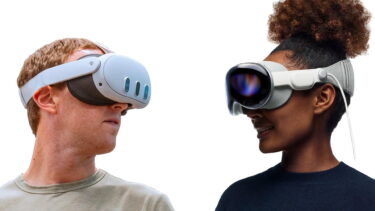Many major apps won't support Vision Pro at launch, what now?

Apple Vision Pro will launch without broad app support. This is a problem Meta Quest has had for years. But there is a long-term solution.
Since last week, it has become clear that Vision Pro will launch without full support from some of the most important streaming apps like Netflix, YouTube and reportedly Spotify.
Not only will there be no native Vision Pro apps for these platforms when Apple's headset launches. Even the iPad versions of Netflix, YouTube, and Spotify will not be available on the device, according to Bloomberg.
Most iPad apps are compatible with Vision Pro without any effort on the developer's part, which is why the headset will support well over one million iPad apps at launch. However, developers have the option to opt out of this compatibility and not make their iPad apps available for Vision Pro.
Netflix, YouTube, and Spotify have signaled that they will do so ahead of the February 2 launch. As a result, Vision Pro users will need to use a web browser if they want to access these services on the headset. It is still possible that native apps for these platforms will be released at a later date, but apparently this will not be the case at launch.
Many major apps are missing
Netflix, YouTube, and Spotify are not the only big apps missing: MacStories reported last week that 46 of the most popular apps in the App Store will not have a native Vision Pro counterpart at launch, and only a third will be available as iPad versions. Meta hasn't announced Vision Pro support for Facebook, Instagram and Whatsapp either.
Research firm Appfigures has identified just under 200 native Vision Pro launch apps (as of January 22, 2024), but most of them are from independent developers. However, the number is likely to grow before launch. Native Vision Pro versions of Office 365, Tiktok, Disney+, Max, Peacock, Amazon Prime Video and IMAX are confirmed. Apple itself is also bringing native Vision Pro apps to Vision Pro, including core apps such as Safari, Photos, Music, Mail, Messages, TV and more.
Vision Pro is marketed as a personal home theater, immersive media player and spatial computer, but the lack of support from major platforms and developers makes this vision less credible.
There are several reasons for this reluctance to support Vision Pro. First, it is still unclear how well the headset will be received by consumers. It is expensive, and Apple will reportedly only be able to produce half a million units in the first year. Second, some major apps and developers may want to punish Apple for its App Store policies and fees. In the case of the fledgling Vision Pro platform, Apple is more dependent on developer support than vice versa.
Meta Quest has the same problem
When it comes to support for major apps, Meta Quest looks even bleaker. The Android-based platform offers native VR apps for YouTube and Netflix, though the latter is outdated and has not been maintained in years. There are also two dozen well-known apps that are available as web apps. These include Word, Excel, PowerPoint, Slack, Facebook, Instagram, and Whatsapp.
Although Meta's Quest headsets have sold more than 20 million units, the platform is still a niche compared to other major device categories. This means that developing and maintaining native Quest apps is not (yet) worth the effort for Netflix and Co.
With Google's help, more Android apps could become compatible with Meta Quest, but a request from Meta to bring the Play store to Quest was denied according to Meta's CTO. For strategic reasons, Google may reserve broader app support for Samsung's upcoming mixed reality headset.
Apple, Meta, and Google must cooperate
As you can see: Each major player is doing its own thing, hampering the growth of the nascent VR industry.
Apple, Meta, Google, and Samsung all have the same goal: to close the paradigm gap between traditional computing (smartphones, tablets, laptops, and desktop computers) and spatial computing (VR and AR headsets). The only way to do this is for existing apps to find their way to the new devices, so that consumers don't feel disconnected from their favorite apps when they put on a headset.
Only then will the masses be willing to spend more time in headsets, or even switch to them altogether. Apple, Meta, and Google need to work more closely together to make this happen. Once a critical mass of users is reached, major platforms like Netflix, Spotify, and others will follow suit and launch native apps for headsets.
Note: Links to online stores in articles can be so-called affiliate links. If you buy through this link, MIXED receives a commission from the provider. For you the price does not change.